The 2021 NBA draft lottery will take place on Tuesday night prior to Game 2 of the Western Conference Quarterfinals between the Clippers and Suns. The half-hour event will be broadcast on ESPN beginning at 7:30 pm central time.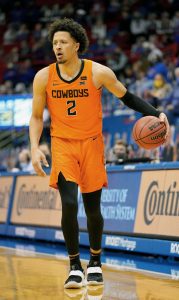
This year’s draft pool features a group of five prospects widely considered to be a level above the rest of the class. Cade Cunningham leads the way, followed in some order by Evan Mobley, Jalen Green, Jalen Suggs, and Jonathan Kuminga. Teams that move into the top four on Tuesday night will have the opportunity to snag one of those potential future stars.
Here’s what you need to know heading into tonight’s lottery:
Pre-Lottery Draft Order:
The top 14 picks in the 2021 NBA draft would look like this if tonight’s lottery results don’t change the order:
- Houston Rockets
- Note: The Thunder will have the ability to swap the Heat’s first-round pick (No. 18) for this selection if it falls outside of the top four (47.9% chance).
- Detroit Pistons
- Orlando Magic
- Oklahoma City Thunder
- Cleveland Cavaliers
- Golden State Warriors (from Timberwolves)
- Note: The Timberwolves will retain this pick if it moves into the top three (27.6% chance).
- Toronto Raptors
- Orlando Magic (from Bulls)
- Note: The Bulls will retain this pick if it moves into the top four (20.3% chance).
- Sacramento Kings
- New Orleans Pelicans
- Charlotte Hornets
- San Antonio Spurs
- Indiana Pacers
- Golden State Warriors
For the full pre-lottery draft order, click here.
Draft Lottery Odds:
 The Rockets, Pistons, and Magic have the best odds to land the No. 1 pick. Each of those three teams has a 14.0% chance to pick first overall, and a 52.1% shot at a top-four pick.
The Rockets, Pistons, and Magic have the best odds to land the No. 1 pick. Each of those three teams has a 14.0% chance to pick first overall, and a 52.1% shot at a top-four pick.
From there, the Thunder (45.1%), Cavaliers (45.1%), Timberwolves (37.2%), and Raptors (31.9%) have the best odds to land in the top four.
For the full draft lottery odds for all 14 spots, click here.
Trades Affecting The Draft Lottery:
Three trades have the potential to shake up Tuesday’s lottery results in a significant way, potentially altering the course of multiple franchises. Here are the details on those deals:
Rockets/Thunder
The Thunder have the ability to swap either their own first-round pick or the Heat’s first-round pick (No. 18) for the Rockets‘ first-rounder, but only if Houston’ selection lands outside the top four.
Since Oklahoma City’s own pick is also a lottery selection, there are essentially just two scenarios in play here:
- The Rockets’ pick lands in the top four and Houston keeps it. The Thunder would keep their own pick, along with the Heat’s pick at No. 18 (52.1% chance).
- The Rockets’ pick lands at No. 5 and the Thunder swap the No. 18 pick for it (47.9% chance).
The Thunder’s ability to swap picks with the Rockets won’t carry over to next season if Houston’s pick is protected.
Timberwolves/Warriors
The Timberwolves owe the Warriors their top-three protected first-round pick, so Golden State will receive the pick if it lands at No. 4 or lower. Technically, it can’t end up at No. 5, but 1-4 and 6-10 are all possibilities.
There’s a 27.6% chance this pick lands in the top three and remains with Minnesota, with a 72.4% chance Golden State gets it. It has a 9.6% chance of moving up to No. 4, and a 62.8% chance of ending up between 6-10. No. 7 (29.7%) or No. 8 (20.6%) are the most likely outcomes.
If the Wolves’ pick lands in the top three and is protected, they’d owe the Warriors their unprotected first-round pick in 2022.
Bulls/Magic
The Bulls owe the Magic their top-four protected first-round pick. It can’t land between 5-7, but Orlando will get it if it ends up in the 8-12 range.
There’s a 20.3% chance the pick will move into the top four, allowing Chicago to keep it, with a 79.7% chance Orlando gets it. No. 8 (34.5%) or No. 9 (36.2%) are, by far, the most likely outcomes.
If the Bulls’ pick lands in the top four and is protected, they’d owe the Magic their top-three protected first-round pick in 2022.
Draft Lottery Representatives:
The on-camera representatives for each of this year’s lottery teams are as follows, according to a press release issued by the NBA:
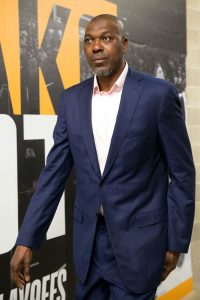 Houston Rockets: Hakeem Olajuwon (former player)
Houston Rockets: Hakeem Olajuwon (former player)
- Detroit Pistons: Ben Wallace (former player)
- Orlando Magic: Jeff Weltman (president of basketball operations)
- Oklahoma City Thunder: Nazr Mohammed (OKC Blue general manager / Thunder pro scout)
- Cleveland Cavaliers: Koby Altman (general manager)
- Minnesota Timberwolves: Anthony Edwards
- Toronto Raptors: Fred VanVleet
- Chicago Bulls: Marc Eversley (general manager)
- Sacramento Kings: Monte McNair (general manager)
- New Orleans Pelicans: Swin Cash (VP of basketball operations and team development)
- Charlotte Hornets: Miles Bridges
- San Antonio Spurs: Peter J. Holt (managing partner)
- Indiana Pacers: Nancy Leonard (former Pacers executive / widow of Hall-of-Famer Slick Leonard)
- Golden State Warriors: Rick Welts (president / COO)
Lottery Format:
This will be the third year that the NBA uses its revamped lottery system, which reduces the odds that the league’s very worst teams will land a top pick and makes the top four selections available via the lottery, instead of the top three.
Before the NBA changed its lottery format, there was a 60.5% chance that one of the league’s bottom three teams would secure the No. 1 pick, and only a 27.6% chance that a team in the 5-14 range of the lottery standings would do so. Now, those odds are 42.0% and 45.5%, respectively.
The results in the last two years have shown that the smoothed-out odds have the potential to create a little more mayhem on lottery night.
In 2019, the Pelicans, Grizzlies, and Lakers claimed three of the top four picks despite ranking seventh, eighth, and 11th, respectively, in the lottery standings. In 2020, the Hornets and Bulls each moved up four spots, from Nos. 7 and 8 to Nos. 3 and 4, respectively. If those seventh and eighth lottery seeds get lucky again this year, it’d be great news for Toronto and Chicago.
For full details on the revamped lottery format, click here.
Photos courtesy of USA Today Sports Images.
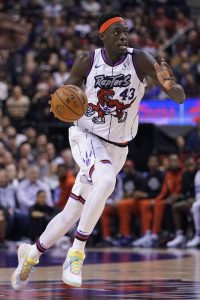 A number of factors contributed to the Raptors’ plunge down the standings. The team lost
A number of factors contributed to the Raptors’ plunge down the standings. The team lost 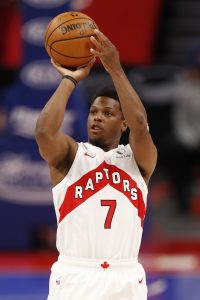
 As was the case in 2019/20 though, Russell and franchise player
As was the case in 2019/20 though, Russell and franchise player 
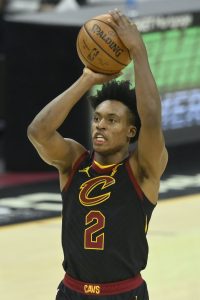 The Cavs have had no shortage of lottery luck over the years, winning the No. 1 pick in 2003, 2011, 2013, and 2014. But the team hasn’t picked in the top four since its latest rebuild began, and as a result hasn’t landed a clear-cut franchise player to build around.
The Cavs have had no shortage of lottery luck over the years, winning the No. 1 pick in 2003, 2011, 2013, and 2014. But the team hasn’t picked in the top four since its latest rebuild began, and as a result hasn’t landed a clear-cut franchise player to build around.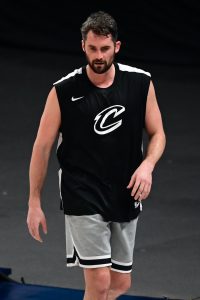

 The Rockets, Pistons, and Magic have the best odds to land the No. 1 pick. Each of those three teams has a 14.0% chance to pick first overall, and a 52.1% shot at a top-four pick.
The Rockets, Pistons, and Magic have the best odds to land the No. 1 pick. Each of those three teams has a 14.0% chance to pick first overall, and a 52.1% shot at a top-four pick. Houston Rockets: Hakeem Olajuwon (former player)
Houston Rockets: Hakeem Olajuwon (former player) An injury limited star point guard
An injury limited star point guard 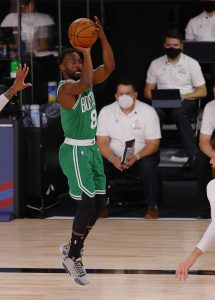 Williams, Roby and Deck all played well for the Thunder this season and seem likely to have their contracts guaranteed. The cap hold for the Thunder’s first first round pick is likely to be in $5.5MM-$8.3MM range. If the Thunder want to use cap space to throw a lucrative offer at a restricted free agent, they will have to renounce their exceptions.
Williams, Roby and Deck all played well for the Thunder this season and seem likely to have their contracts guaranteed. The cap hold for the Thunder’s first first round pick is likely to be in $5.5MM-$8.3MM range. If the Thunder want to use cap space to throw a lucrative offer at a restricted free agent, they will have to renounce their exceptions.